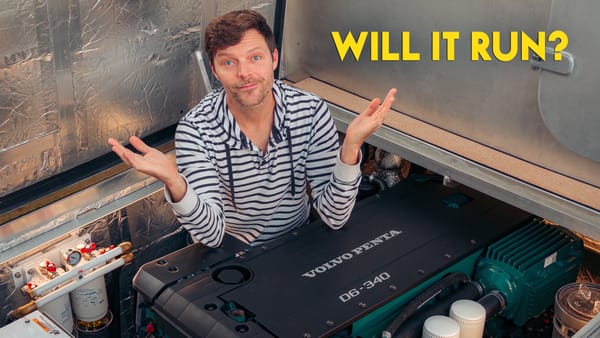ELECTRIC BOATING JUST GOT REAL! (testing the best 5 electric motors)

We’re on the hunt for a new electric-powered dinghy. Because there are a lot of benefits when going all-electric and only a few downsides. Plus, our new catamaran will practically be a floating renewable power plant, so it seems silly not to go electric with our tender.
Our quest began last week when we compared our top choice rigid and inflatable dinghies (so far). And this week, we’re putting the 5 best electric motors we could find to the test. Because the manufacturers make a lot of claims when it comes to speed, range, and weight. But there’s only one way to know if any of them is a realistic option for our needs.
Spoiler alert, there are two that completely blew us away…and one that does 360s!
OUR TENDER NEEDS & WANTS
Our new home is all about being efficient and self-reliant, using renewable energy and electric propulsion…we want our dinghy to be more of the same.
On Curiosity2, HH has built-in some super-strong carbon fiber dinghy davits than can hold an 11-foot tender with a max weight of 440lbs.
Desired Cruising Speed: 10-15 knots
I say cruising speed because with electric motors we don’t want to be at top speed all the time, that would tap our batteries out quick. Going at 50-75% will give us a lot more range. But, knowing we have that burst of power for running against a strong current or getting out of the way of a larger vessel, is priceless.
Desired Range: 20 miles
A normal day of dingy-ing around for us is anywhere between 10-20 miles (exploring, diving, grocery run…). But in these early stages, we’re trying to stay open-minded and we’re testing a wide variety of motors.
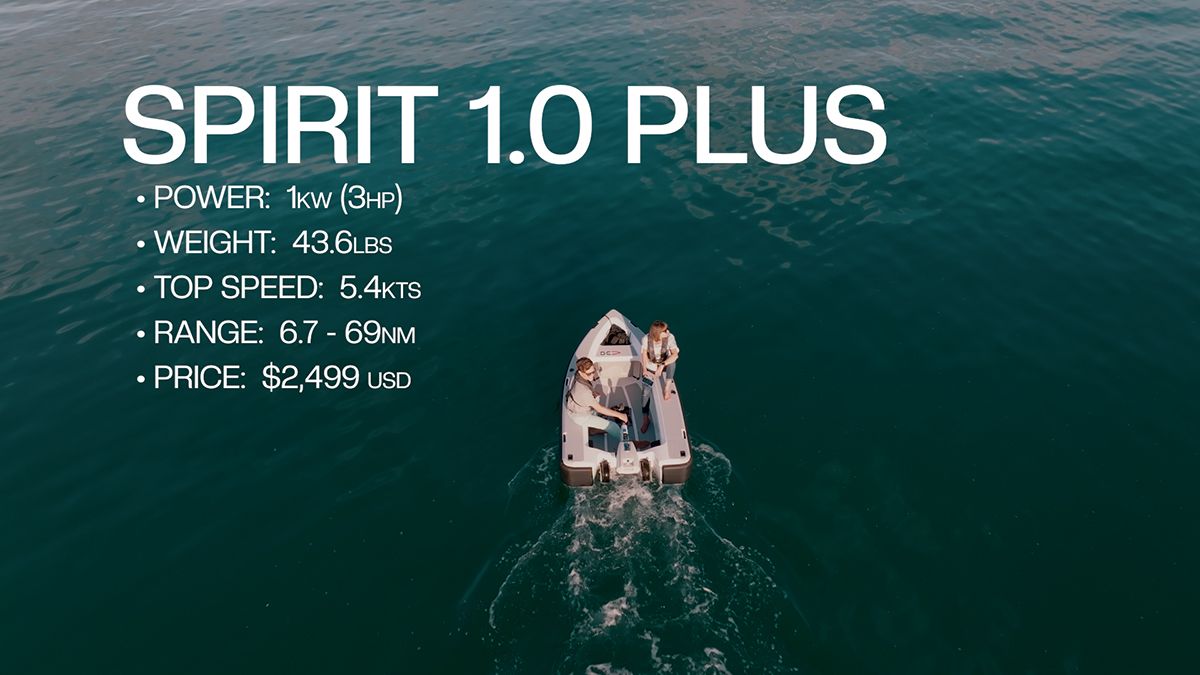
FAMILIAR & ENJOYABLE, BUT TOO SLOW
Our Top Speed: 4 knots on the Highfield / 4.5 knots on the OC
Realistic Cruising Speed: 3 knots
The overall experience with the Spirit feels just like the motoring experience we’re used to, but without the motoring noise. A few things worth noting are the portable solar panel and hydrogeneration options for sailing dinghies. If you already own a 2.5hp or 3hp engine you will most likely be very pleased with this little guy.
Full Details: epropulsion.com/spirit-1
If you are in New Zealand, contact Adam at Beacon Marine: beaconmarine.nz
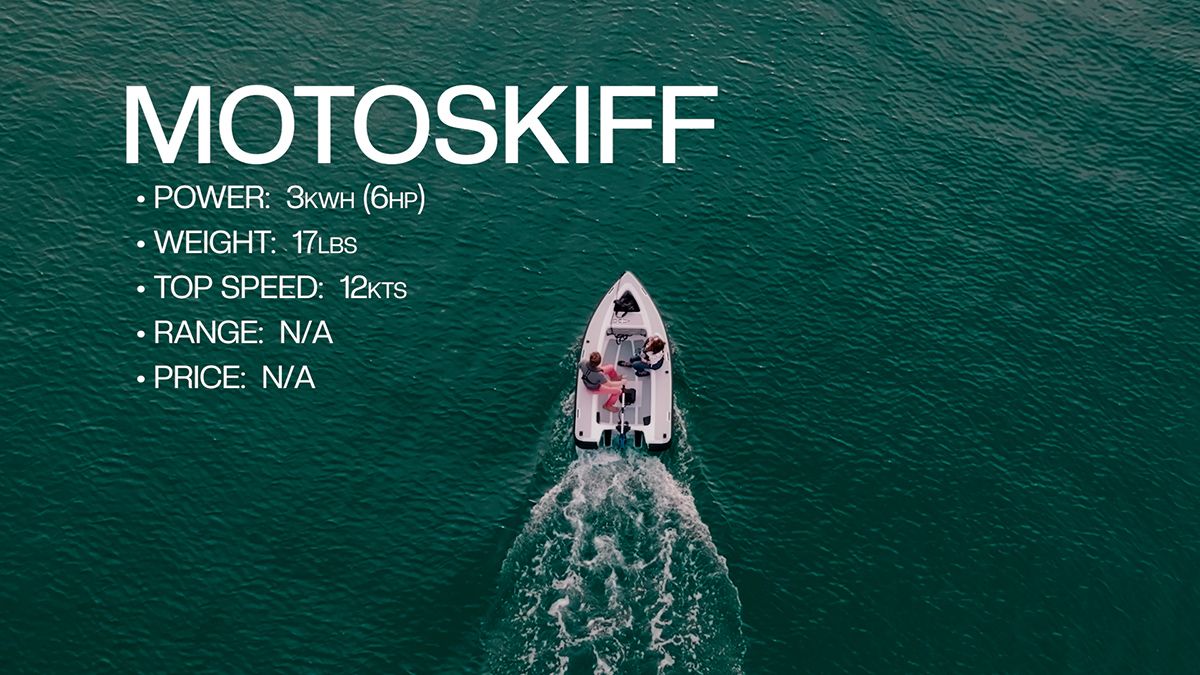
PORTABLE, POWERFUL, LIGHTWEIGHT CONTENDER
Our Top Speed: 6.7 knots on the OC
Realistic Cruising Speed: 5 knots
Looking at this setup, it’s hard to believe. Full Stop. Weighing in at half the weight of the Spirit 1.0 and yet double the power. MotoSkiff has been making tweaks and improvements and now claims to get a top speed of 12 knots. If so, this could be a serious contender and market disrupter. We hope to take it for another test spin with the newest updates before we leave New Zealand.
Full Details: motoskiff.com
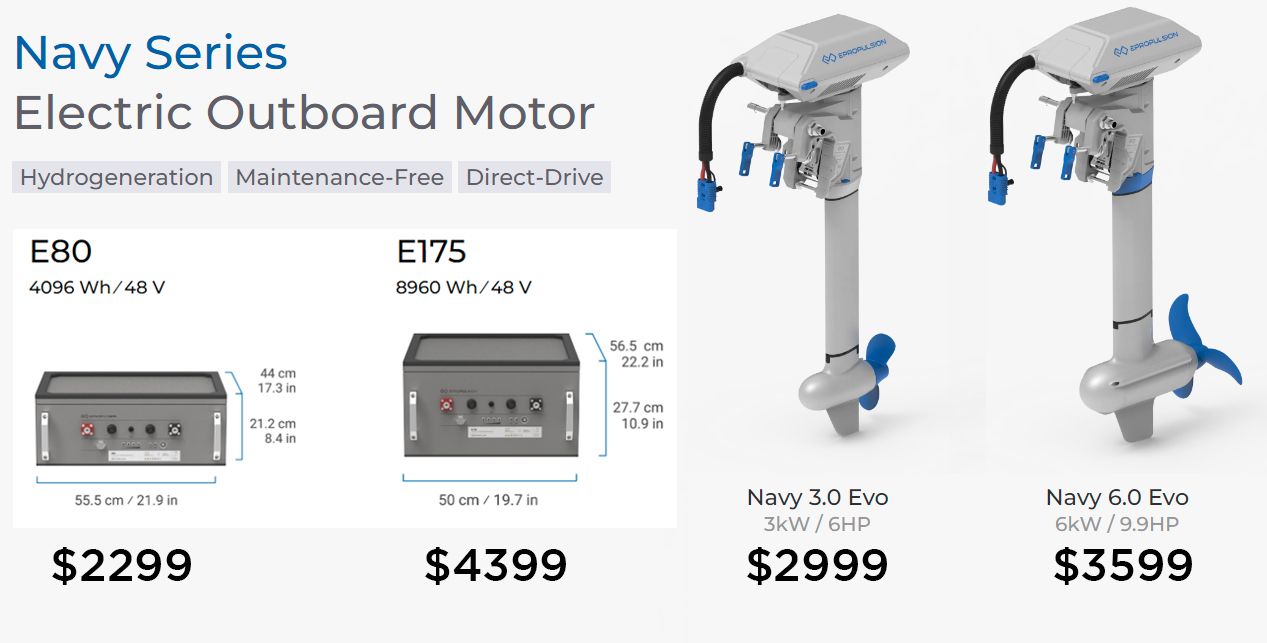
Navy 3.0 Motor Weight: 24.3 kg / 53.6 lbs Navy 6.0 Motor Weight: 36 kg / 79.4 lbs
Battery Weights: E80 – 53 kg / 116.8 lbs E175 – 87 kg / 191.8 lbs
We knew these were on the heavy side for our needs, but the reality hit hard when we started setting them up. I am sure it would work great for trolling on a lake, or canal, but not so much for a mid-size tender to a sailboat.
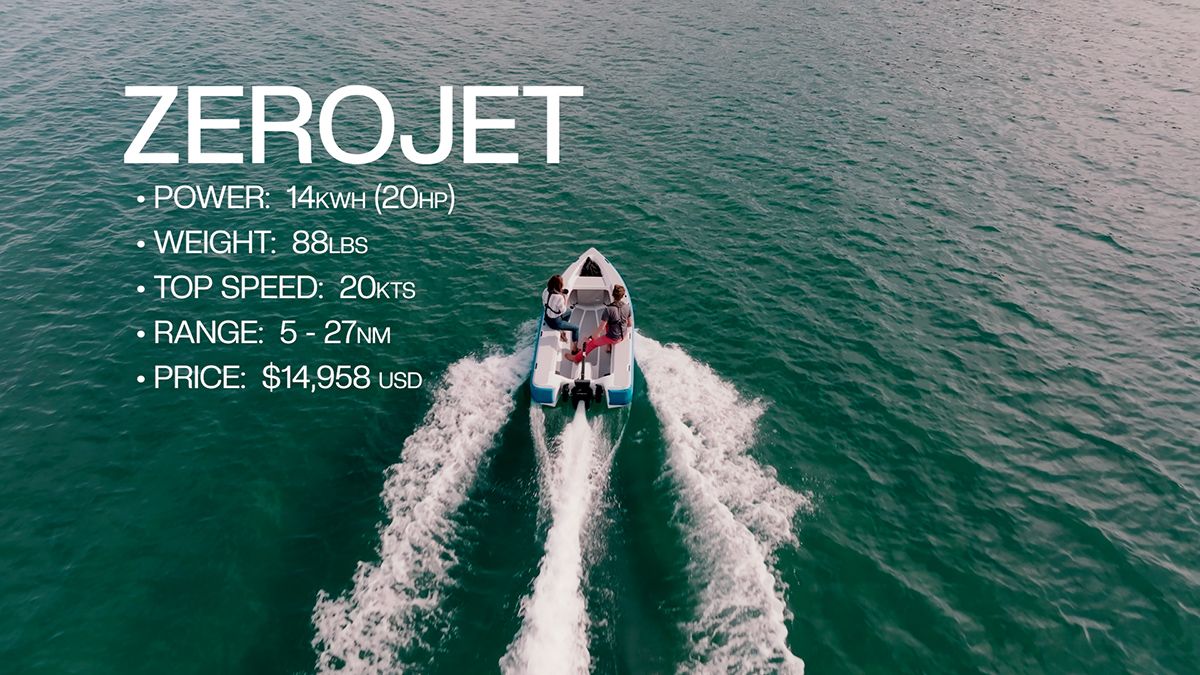
ELECTRIC JET ENGINE DREAM
Our Top Speed: 19 knots on the OC
Realistic Cruising Speed: 10-15 knots
If I’m being totally honest, I really didn’t want to like it. I thought it would be a novelty, and no way would it work as a sailboat tender. But, we haven’t found anything else in this speed and range that could compete. Much less anything else this much fun. Electric boating just got real and it makes me very excited about what the future of this space will look like. Because this isn’t just a mode of transportation, it’s an experience. If you have the budget, can you please buy us one too!
Full Details: https://www.zerojet.nz
🙈🙉🙊 FULL DISCLOSURE
This video was not sponsored by any of the boats or motors mentioned or reviewed. We don’t get any sort of incentive should you purchase. But if you do, please let them know they should buy us a beer for the recommendation. 🍻
🎥 CAMERA GEAR USED TO FILM THIS VIDEO
🎶 MUSIC IN THIS VIDEO
- Get 2 Months for FREE: https://bit.ly/artlist-GWTW
- Artists – Michael Shynes, Francesco Dandrea
🙏 THANK YOU!
Ups, downs, and all around, we share it all. If you like what you see, there are lots of ways you can show your support.


